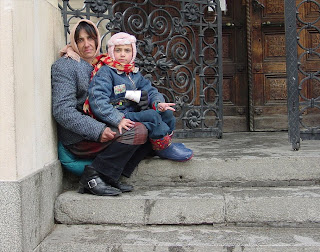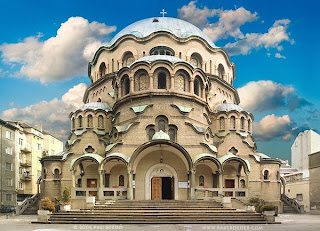The country is a parliamentary democracy. The last general elections were held at the end of 2007, in which no single party won a majority. After negotiations, the HDZ (the Croatian Democratic Union) leader and incumbent Prime Minister, Ivo Sanader, convinced other MPs that he should get the mandate to form the new government. His coalition partners are the HSS (Croatian Peasant Party), the Croatian-Serb Party and representatives of some minority groups in the country.
Presidential elections were last held in January 2005 when President Stipe Mesic was re-elected to another five year term. Presidential powers in Croatia are limited, but he is still influential in making domestic and foreign policy issues.
It is expected that Croatia will receive an invitation to join NATO in April 2008.
EU membership negotiations are proceeding slowly. In the opinion of many experts, Croatia has no chance of joining before 2010.
Thursday, February 5, 2009
History
Slavic Croatian tribes settled in the area in the early 7th century (arriving from present day Poland), accepting Christianity in around 800 A.D., and soon establishing their own state ruled by princes or dukes. In 925, Croatia became a kingdom under the rule of King Tomislav. In 1102 the country formed a union with Hungary which lasted until 1918. After the end of the First World War, Croatia joined Serbia, and Yugoslavia (the land of South Slavs) was formed, until its demise in 1991. The first Yugoslavia (1918-1941) was ruled by the Serbian royal family, Karadjordjevic, which naturally favoured the Serbs and caused enormous resentment in Croatia. The country was invaded by Nazi Germany in April 1941, which gave Croatia independence under the fascist dictator Ante Pavelic. This regime was known for its harsh rule and for committing numerous atrocities, and therefore many Croats (over 200,000) actively joined the resistance movement under Tito which liberated the country in May 1945. (Winston Churchill was so impressed with the Croatian resistance that in 1944 he sent his son Randolph and the writer Evelyn Waugh to Croatia as his personal emissaries.) Croatia became one of the Yugoslav republics ruled by the communist government until 1991 when Croatia declared its independence, prompting Serbian invasion. Almost all Croats rose to defend their country under the leadership of its first president, the late Franjo Tudjman (who died in December 1999), and after five years the country was liberated.
About Croatia
Croatia is a Central European and Mediterranean country, bordering Slovenia in the west, Hungary in the north, Serbia in the east and Bosnia and Herzegovina in the south. Croatia also has a long maritime border with Italy in the Adriatic Sea. These borders total 2,028 km altogether. Croatia has a strange shape (similar to a croissant) - similar to no other country in the world - which comes as a result of five centuries of expansion by the Ottoman (Turkish) empire towards Central Europe (although Croatia was never conquered by the Turks).
Croatia covers a land area of 56,691 square kilometres and has a population of about 4.4 million people (2001 census). Over 90% of the population is Croat (the majority of whom are Roman Catholics), but there are also Serbian, Bosnian, Hungarian and Italian minorities. The main population centres are Zagreb, the capital (with a population of just under 800,000), Osijek in the northwest, and the ports of Rijeka, and Split in the south. The official language is Croatian, which is written in the Latin script.
Croatia has an amazing 5,835km of coastline, 4,057km of which belongs to islands, cliffs and reefs. There are 1,185 islands in the Adriatic, but only about 50 are populated. The largest island is Krk (near Rijeka) which has a land area of 462 square km.
The climate is Mediterranean along the Adriatic coast, meaning warm dry summers and mild winters, with 2,600 hours of sunlight on average yearly - it is one of the sunniest coastlines in Europe! In the interior of the country, the climate is continental with hot summers and cold, snowy winters.
More facts and figures on the country can be found at the CIA World Factbook on Croatia.
Croatia covers a land area of 56,691 square kilometres and has a population of about 4.4 million people (2001 census). Over 90% of the population is Croat (the majority of whom are Roman Catholics), but there are also Serbian, Bosnian, Hungarian and Italian minorities. The main population centres are Zagreb, the capital (with a population of just under 800,000), Osijek in the northwest, and the ports of Rijeka, and Split in the south. The official language is Croatian, which is written in the Latin script.
Croatia has an amazing 5,835km of coastline, 4,057km of which belongs to islands, cliffs and reefs. There are 1,185 islands in the Adriatic, but only about 50 are populated. The largest island is Krk (near Rijeka) which has a land area of 462 square km.
The climate is Mediterranean along the Adriatic coast, meaning warm dry summers and mild winters, with 2,600 hours of sunlight on average yearly - it is one of the sunniest coastlines in Europe! In the interior of the country, the climate is continental with hot summers and cold, snowy winters.
More facts and figures on the country can be found at the CIA World Factbook on Croatia.
Subscribe to:
Comments (Atom)



















